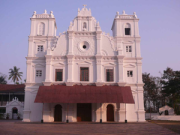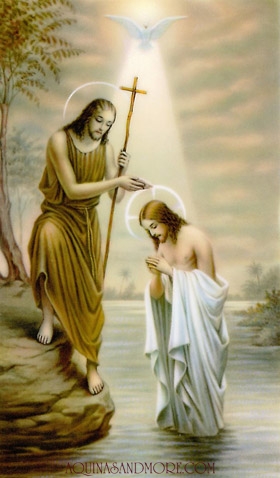
St. John the Baptist

St. John the Baptist (Ancient Greek: Ἰωάννης ὁ βαπτιστής, Ioannēs ho baptistēs or Ἰωάννης ὁ βαπτίζων, Ioannēs ho baptizōn, known as the prophet Yahya in the Qur’an) was a Jewish itinerant preacher in the early first century AD and is revered as a major religious figure along with Christianity, also in Islam, the Bahá’í Faith and Mandaeism. He is called a prophet by all of these traditions, and honoured as a saint in many Christian traditions.
St. John the Baptist used baptism as the central sacrament of his messianic movement. Most scholars agree that St. John the Baptist baptized Jesus. Scholars generally believe Jesus was a follower or disciple of John and several New Testament accounts report that some of Jesus’ early followers had previously been followers of John. John the Baptist is also mentioned by the Jewish historian Josephus. Some scholars maintain that St. John the Baptist was influenced by the semi-ascetic Essenes, who expected an apocalypse and practiced rituals corresponding strongly with baptism, although no direct evidence substantiates this.
According to the New Testament, John anticipated a messianic figure greater than himself, and Jesus was the one whose coming John foretold. Christians commonly refer to John as the precursor or forerunner of Jesus, since John announces Jesus’ coming. John is also identified with the prophet Elijah.
The burial-place of John the Baptist was traditionally said to be at the Nabi Yahya Mosque (Saint John the Baptiste Mosque) in Sebaste in current Palestinian territories, and mention is made of his relics being honored there around the middle of the 4th century. The historians Rufinus and Theodoretus record that the shrine was desecrated under Julian the Apostate around 362, the bones being partly burned. A portion of the rescued relics were carried to Jerusalem, then to Alexandria, where on 27 May 395, they were laid in the basilica newly dedicated to the Forerunner on the former site of the temple of Serapis. The tomb at Sebaste continued, nevertheless, to be visited by pious pilgrims, and St. Jerome bears witness to miracles being worked there.
What became of the head of John the Baptist is difficult to determine. Nicephorus and Symeon Metaphrastes say that Herodias had it buried in the fortress of Machaerus (in accordance with Josephus). Other writers say that it was interred in Herod’s palace at Jerusalem; there it was found during the reign of Constantine I, and thence secretly taken to Emesa where it was concealed, the place remaining unknown for years, until it was manifested by revelation in 453. However, the decapitation cloth of St. John is kept at the Aachen Cathedral. The Coptic Christian Orthodox Church also claim to hold the relics of St. John the Baptist. These are to be found in a monastery in Lower Egypt between Cairo and Alexandria. It is possible, with permission from the monks, to see the original tomb where the remains were found.
Other obscure and surprising claim relates to the town of Halifax in West Yorkshire, United Kingdom, where the Baptist’s head appears on the official coat-of-arms. A legend first recorded in the late 16th century and reported in William Camden‘s Britannia accounts for the town’s place-name, as ‘halig’ (holy) and ‘fax’ (face), by stating that the first religious settlers of the district brought the ‘face’ of John the Baptist with them.
Also, in 2010, bones were discovered in the ruins of a Bulgarian church in the St. John the Forerunner Monastery (4th–17th centuries) on the Black Sea island of St. Ivan and two years later, after DNA and radio carbon testing proved the bones belonged to a Middle Eastern man who lived in the 1st century AD, scientists said that the remains could conceivably have belonged to John the Baptist. The remains, found in a reliquarium are presently kept in the Sts. Cyril and Methodius Cathedral in Sozopol.